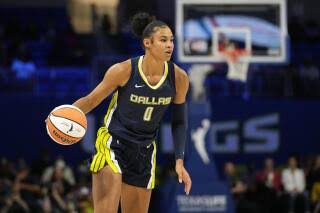The Indiana Fever have made a major move by signing veteran forward Natasha Howard, adding a championship-caliber presence to their lineup alongside rookie sensation Caitlin Clark. Howard, a three-time WNBA champion and former Defensive Player of the Year, brings elite two-way skills and veteran leadership to a young Fever squad aiming for a playoff push.
Howard, 33, returns to the franchise that originally drafted her fifth overall in 2014. Over the past decade, she has built an impressive résumé, winning titles with the Minnesota Lynx (2017) and Seattle Storm (2018, 2020) while earning two All-Star selections. Last season with the Dallas Wings, she averaged 17.6 points, 6.7 rebounds, and a career-high 2.9 assists per game, proving she remains a high-impact player.
For Indiana, Howard’s addition signals a commitment to winning now. Her defensive versatility, rebounding prowess, and scoring ability should complement Clark’s playmaking and Aliyah Boston’s interior presence. With the Fever seeking their first postseason appearance since 2016, Howard’s experience and leadership could be the missing piece in their resurgence.
The Fever open their regular season on May 17 against the Chicago Sky, where Howard’s impact will be on full display.






